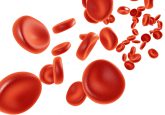Study demonstrates variation in the cellular components of fingerprick blood

New research from Rice University (TX, USA), which examines the variation between blood drops drawn from a single fingerprick has demonstrated that results obtained from a single blood drop are highly variable. The researchers recommend that approximately six to nine blood drops should be analyzed to obtain consistent results.
The study, which appears online in the December issue of the American Journal of Clinical Pathology, suggests that health care professionals should be aware of potentially skewed results when developing new protocols and technologies that rely on fingerprick blood.
“We began looking at this after we got some surprising results from our controls in an earlier study,” explained lead investigator Rebecca Richards-Kortum (Rice University). “Students in my lab are developing novel, low-cost platforms for anemia, platelet and white blood cell testing in low-resource settings, and one of my students, Meaghan Bond, noticed there was wide variation in some of the benchmark tests that she was performing on hospital-grade blood analyzers.”
When investigating this variation among the control data, it was important to determine whether there was a problem with the current experiments or actual variations in the amount of hemoglobin, platelets and white blood cells (WBC) in the different drops of blood. This led the investigators to design a simple protocol to test whether there was actual variation, and if so, how much.
Six successive 20 µl droplets of blood were drawn from the same fingerprick of 11 donors, using standard best practice techniques, and venepuncture was used as an experimental control. Ten successive 10 µl droplets from seven additional donors were drawn as part of an additional test to determine whether minimum droplet size might also affect the results.
Each 20 µl droplet was analyzed with a hospital-grade blood analyzer for hemoglobin concentration, total WBC count, platelet count and three-part WBC differential and each 10 µl droplet was tested for hemoglobin concentration with a popular point-of-care blood analyzer used in many clinics and blood centers.
“A growing number of clinically important tests are performed using fingerprick blood, and this is especially true in low-resource settings,” Bond commented. “It is important to understand how variations in fingerprick blood collection protocols can affect point-of-care test accuracy as well as how results might vary between different kinds of point-of-care tests that use fingerprick blood from the same patient.”
It was discovered that hemoglobin content, platelet count and WBC count each varied significantly from drop to drop. In some donors it was observed that hemoglobin concentration changed by more than two grams per deciliter in the span of two successive drops of blood. The average results of droplet tests could produce equivalent results to venous blood tests, but six to nine blood drops were required for consistent results.
“Our results show that people need to take care to administer fingerprick tests in a way that produces accurate results because accuracy in these tests is increasingly important for diagnosing conditions like anemia, infections and sickle-cell anemia, malaria, HIV and other diseases.” commented Bond.
Sources: Blood test results vary from drop to drop in fingerprick tests; Bond MM, Richards-Kortum RR. Drop-to-drop variation in the cellular components of fingerprick blood: implications for point-of-care diagnostic development. Am. J. Clin. Pathol. 144(6), 885–894 (2015).





